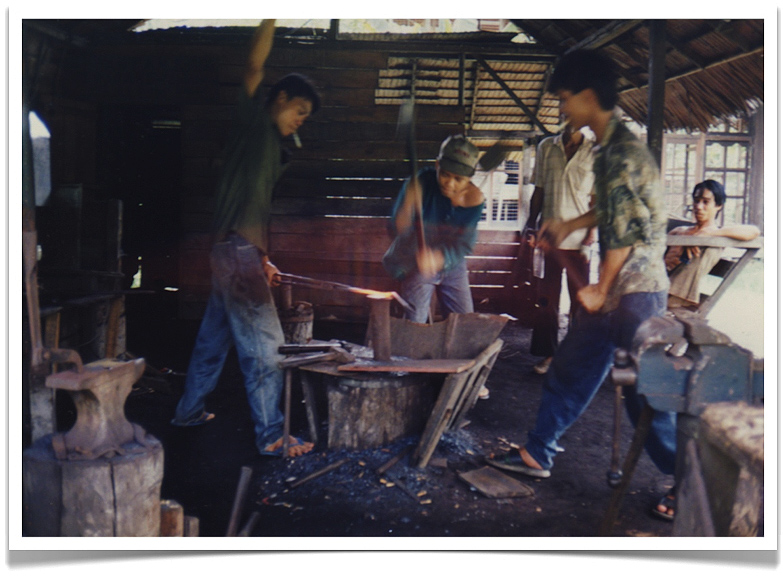Boxing and Firing
 Tuesday, July 28, 2015 at 12:08PM
Tuesday, July 28, 2015 at 12:08PM 
Dayak man from the village of Ensibau in West Kalimantan setting the dried leaves and twigs that he has crammed into a "box" cut into the trunk of this Dipterocarpus tree on fire to get the dried damar resin (see Damar) flowing again. This technique of collecting resin from wild trees is called "boxing and firing". I don't imagine that the trees like it very much. [NOTE: For the obsessively observant, the villager from Ensibau shown in the photo above, is the same one shown here cutting shingles (from a similar Dipterocarpus species)].
 Ensibau,
Ensibau,  West Kalimantan,
West Kalimantan,  bosing and firing,
bosing and firing,  damar in
damar in  Science | |
Science | |  Email Article |
Email Article |  Print Article
Print Article 










